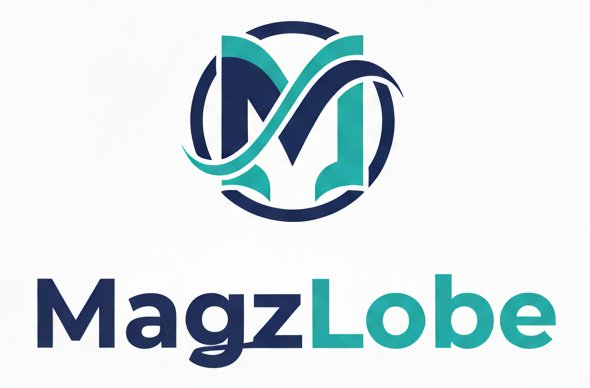gldyql — Practical Guide to the Emerging Query Language
Introduction
gldyql is an emerging query concept that blends declarative querying with NLP-friendly features, aimed at making complex data retrieval intuitive for developers and analysts alike. In this guide, you’ll get hands-on explanations, real-world examples, and practical tips to start applying gldyql in pipelines and dashboards.
What is gldyql and why it matters
At its core, gldyql is a hybrid query approach: imagine SQL’s clarity meeting an NLP layer that understands semantics. That means instead of wrestling with verbose joins or brittle transforms, you can express intent and let the engine translate it into optimized data operations. Early references show gldyql being discussed across blogs and tutorials as a nascent tool for creative data querying.
The design philosophy behind gldyql
gldyql favors:
-
Human intent first: queries written in near-natural terms.
-
Compatibility: adapters that compile to SQL, Elasticsearch queries, or BigQuery statements.
-
Performance-aware planning: the engine rewrites intent into index-friendly operations.
Think of gldyql like a translator sitting between your analyst and PostgreSQL or Elasticsearch — it listens for meaning, then emits the optimal execution plan.
gldyql vs SQL: complementary, not replacement
While SQL is mature and powerful, gldyql introduces a layer that:
-
abstracts complex NLP parsing,
-
simplifies federated queries across systems like Apache Spark and AWS services, and
-
lowers the barrier to join unstructured sources (logs, text) with structured tables.
For teams using SQL-heavy stacks (PostgreSQL, BigQuery), gldyql can act as a compatibility layer, generating SQL snippets when needed while preserving semantic clarity. This hybrid approach makes migration less painful and adoption stealthy.
Core features and semantics of gldyql
Declarative intent
Write what you want: “top customers last quarter by churn risk.” The gldyql parser resolves entities (dates, metrics) and maps them to schema columns or external models (e.g., a TensorFlow churn model).
NLP-friendly predicates
Built-in language constructs identify synonyms and phrases, turning natural language into filters and joins.
Pluggable backends
Adapters for PostgreSQL, Elasticsearch, Apache Spark, and BigQuery allow execution where the data lives. This federated model keeps data movement minimal.
Typical gldyql workflow (practical steps)
-
Define intent in gldyql syntax or via a short sentence.
-
Resolve schema mapping with a registry (maps human terms to columns).
-
Select execution backend (PostgreSQL for relational, Elasticsearch for search-oriented queries).
-
Optimize and run — the planner rewrites the intent into backend-optimized code.
-
Return structured output to dashboards or downstream ETL.
This flow fits into existing pipelines: ingest with Apache Spark or AWS Glue, store in PostgreSQL, and query with gldyql for analytics.
Real-life examples and analogies
Imagine a librarian who knows every book and can answer fuzzy questions like “show me thrillers with high reader ratings and mentions of New York.” Instead of constructing a complex boolean query, you say the question once — that’s gldyql’s promise.
Example: sales dashboard query (gldyql style)
give top 10 products by revenue last 30 days, exclude returns, show region breakdown
The engine resolves “returns” to the returns table, “revenue” to the sales_amount column, and generates efficient GROUP BY & JOIN logic across PostgreSQL and a happiness-score model on TensorFlow.
Integration patterns with popular tools
-
Python SDK: call gldyql from Python scripts, integrate with pandas for downstream analysis.
-
OpenAI (or other LLMs): use an LLM to expand ambiguous user input into clearer gldyql intent statements.
-
Elasticsearch: map semantic filters to full-text queries for fuzzy search use cases.
-
GitHub CI: version control gldyql query templates and test them automatically.
These integrations make gldyql practical in data science stacks that already use TensorFlow, Spark, or AWS.
Performance tips and best practices
-
Schema registry: maintain mappings to avoid ambiguous resolutions.
-
Index-first planning: prefer queries that can use existing indexes in PostgreSQL or Elasticsearch.
-
Limit data movement: run queries close to the data with adapters rather than pulling everything into a central store.
-
Cache resolved plans: store compiled plans for repeated intents.
-
Monitor with metrics: track execution time across backends to tune the planner.
Security and governance
gldyql must respect role-based access controls (RBAC) and column-level masking. Integrate gldyql into your existing IAM on AWS or database grants on PostgreSQL. Audit compiled plans and expose lineage so data governance tools can interpret gldyql activity.
Adoption playbook for teams
-
Start small: identify 2–3 analyst workflows that are pain points (text search, cross-source joins).
-
Prototype with Python SDK and a PostgreSQL backend.
-
Measure: compare time-to-answer, error rates, and developer happiness.
-
Scale: add connectors to Elasticsearch and Spark once confidence grows.
Early adopters can leverage GitHub for templates and share patterns across teams.
Common pitfalls and how to avoid them
-
Ambiguous intent: require simple controlled vocabulary in the earliest stage.
-
Overreliance on LLMs: use LLMs to assist, not to author final plans without validation.
-
Ignoring costs: federated queries can increase compute — monitor execution across AWS or BigQuery.
When to choose gldyql
Use gldyql when:
-
you need fast prototyping of complex, multi-source queries,
-
non-SQL-savvy stakeholders must express data needs, or
-
you want to layer semantic search over structured datasets.
Conclusion
gldyql represents a practical bridge between human intent and efficient data execution. For teams willing to try new tools, it lowers friction and accelerates insight discovery. Start with focused prototypes, track performance and cost, and expand connectors as you validate gains. Try expressing three common analyst questions in gldyql-style sentences and test how easily the system resolves them — you’ll quickly see the value.
Draft one analyst query today in gldyql style and run it through a prototype planner — then compare results against a hand-written SQL query.
Also Read: Toastul: 10 Creative Toppings for Home & Café
FAQ (answers to People Also Ask)
What is gldyql and how does it differ from SQL?
gldyql is a semantic-first query approach that accepts human intent and compiles it into backend-specific operations (SQL, search queries). It differs by focusing on meaning, not just syntax, while still producing optimized SQL when needed.
Can gldyql handle unstructured data and NLP queries?
Yes — one of gldyql’s strengths is mapping natural language predicates to full-text search backends like Elasticsearch and combining results with structured sources.
Is there a gldyql SDK or library for Python?
Many early implementations offer Python SDKs to integrate gldyql into data workflows, enabling calls from notebooks and production scripts.
What are common gldyql performance tuning tips?
Maintain clear schema mapping, prefer index-using patterns, cache compiled plans, and run queries close to data sources to limit data transfer.
How secure is gldyql for enterprise data pipelines?
Security depends on integration: enforce RBAC, apply column masking at the adapter layer, and record audit logs for every compiled plan. Treat gldyql as part of your governance stack.













